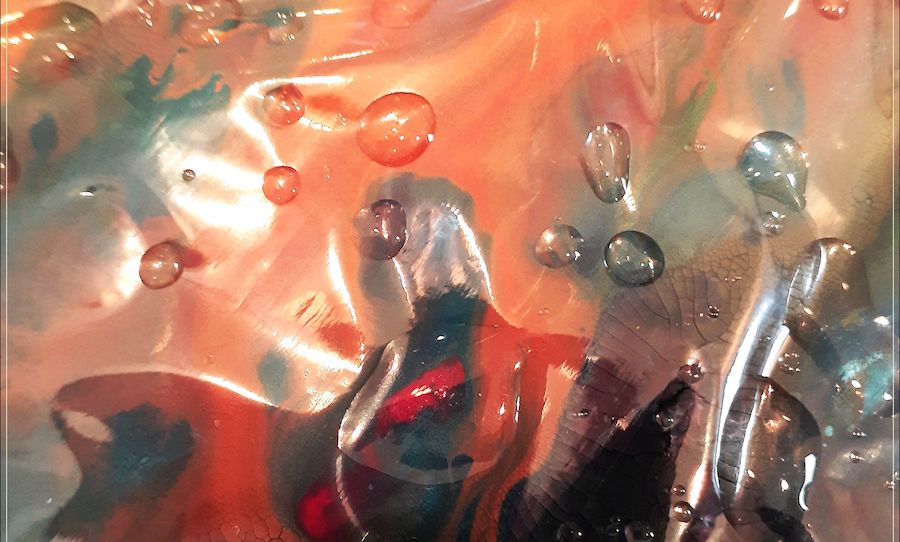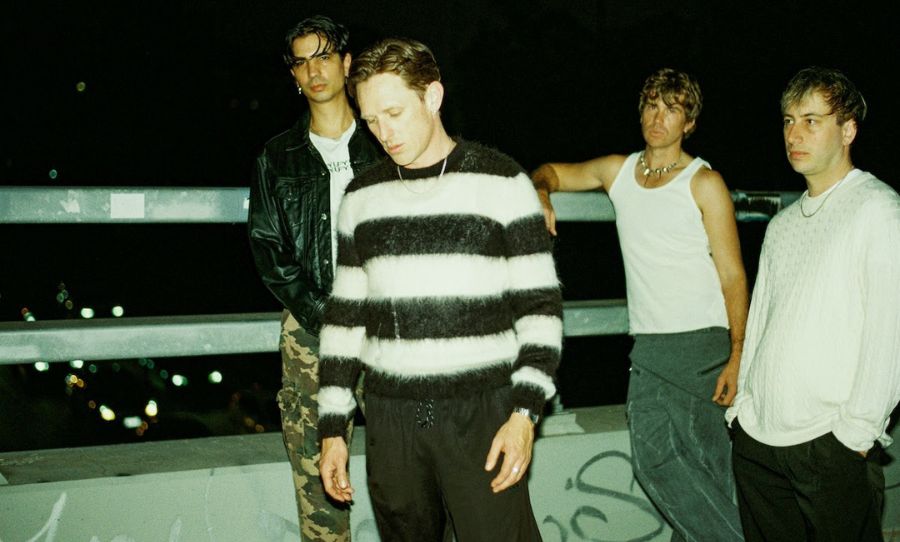Kyle Lacko’s shoegaze project resurfaces with ‘Treasureville’—a lush, introspective journey home
Since 2015, Tidal Peak has been the sonic vessel for Kyle Lacko’s hazy, introspective dream pop and shoegaze explorations.
As the project’s sole constant member, Lacko has woven lush soundscapes across EPs, singles, and 2020’s ‘Shimmer,’ while occasionally bringing the music to life onstage in Toowoomba and Brisbane.
Now, after five years of silence, Tidal Peak returns with Treasureville—a deeply personal album, out now!

Recorded entirely at home, Treasureville is a labor of obsessive perfectionism, its track list scrapped twice before completion.
The album’s second half, ‘Return to Capricorn,’ is a 28-minute suite split into five ethereal movements, reflecting on Lacko’s childhood along the Capricorn Coast.
Singles ‘Coasting’ and ‘Wilderness Years’ offer glimpses into this nostalgic, seaside-tinged journey, blending DIY shoegaze with progressive pop ambition.
We talked with Kyle to discuss the album’s prolonged creation, his DIY process, and the stories behind Treasureville’s immersive sound.

Listen to Tidal Peak’s music below.
Without further ado, check out the interview here.
HAPPY: What have you been up to today?
TIDAL PEAK: I’ve been resting in bed from a really bad virus, drinking lots of juice and tea and taking as many meds as I can.
HAPPY: Treasureville took five years to complete, with multiple track list revisions. What was the biggest creative hurdle you faced, and how did you finally decide the album was finished?
TIDAL PEAK: The biggest hurdle for me was the constant indecision and second-guessing on how the album was going to sound.
It took a while for me to realise various tracks had no substance to them, because I was chasing trends rather than making tracks with feeling to them.
I had to rectify that immediately if I was going to have any connection with this album, and so I set upon making what sounded good to me; the kind of music I’d want to listen to.
Having no boundaries on trends freed up my creativity instantly.
Knowing when the album was done wasn’t exactly a decision, but a feeling, like when the puzzle pieces all fit into place perfectly.
When there was nothing more to add or take away, I knew the album was complete.
The flow and sequence of the track-listing was so crucial to the album as a whole.
HAPPY: The ‘Return to Capricorn’ suite is deeply tied to your childhood on the coast. Were there specific memories or emotions that directly inspired your musical choices?
TIDAL PEAK: I had been looking back on memories of Yeppoon during lockdown and realised I had not really written anything about it as a whole.
There were things I felt deeply about that place that inspired the music as well as the decision to turn half of Treasureville into a conceptual suite, such as friendships with people I knew for a long time before they drifted out of my orbit, or a particular person in high school that I had been head over heels for, before we went our separate ways.
Landmarks were important too; I have specific memories of wandering up and down Farnborough Beach and Lammermoor Beach as a teenager, and fishing off the Ross Creek Pier.
These were all places that stayed with me and deserved to be revisited in the suite.
HAPPY: You’ve described your perfectionism as “ramping up” during this album’s production. How do you balance that tendency with the need to eventually release your work? Do you ever regret tweaking things for too long?
TIDAL PEAK: There comes a point when you have to look objectively at what you’ve made and try to see it from an outsider perspective.
I knew if I spent forever tweaking things then it would never be finished in my mind, but I definitely don’t regret being obsessive with the production either.
It was necessary taking my time to get the tracks to the standard I strove for.
What probably helped was balancing my past work with what I had been working on at the time, and realising I wanted to have something that I could listen back to and enjoy.
I can’t do that very much with my previous work anymore.
The first album I did, The Shallow Surface, was knocked out in only four months; part of that was due to having the means to record at home for the first time, so I got swept up in the excitement which was great, but now I think I’ve grown to a point where I like to take my time and consider things carefully before I decide something is worth releasing.
Yes, my perfectionism has meant that it took so long to release something, but it’s also made me want to put out something really great and impactful, something I can look back on and be proud of.
I’m not interested in a release being just good enough.
HAPPY: The album’s DIY production has a lush, immersive quality. Were there any specific techniques or gear discoveries that shaped Treasureville’s sound?
TIDAL PEAK: Midway through recording I had finally gotten to grips with recording on the DAW software Cubase; I’ll admit that before then, everything had been recorded through Audacity which was good for demos but not for the high fidelity sound I had in mind.
Right before the album’s production I had purchased a Korg Volca FM synth and a Roland TR-08 drum machine (a much smaller version of the famous 808) and those two machines would have a hand in shaping several tracks where the Roland was mixed in tandem with the kick and snare of my Alesis SR-16 drum machine.
The Volca FM also served as a decent sequencer for bass tracks when my fretless ended up out of action.
The last thing that I remember stumbling upon was the use of the vocoder on my Microkorg synth, which I found I could use to create these haunting lines underneath my vocals.
Speaking of, I had to work hard to shape and sculpt my vocals to sound the way they did on the album, all built up into lush choral soundscapes.
Listening to Enya’s album Watermark (1988) had a hand in influencing the way I multi-tracked my vocal parts.
Overall I wanted the album to sound lush and full while leaving space on certain tracks.
Everything was tracked at least 3-7 times to make instruments and vocals sound fuller and richer.
HAPPY: You’ve mentioned the seaside as a recurring theme. Beyond nostalgia, what does the ocean or coastal imagery represent to you musically?
TIDAL PEAK: It has always been a big part of Tidal Peak’s musical identity, not just in the songs but the imagery as well.
Some artists have a type of place that’s associated with them, and coastal themes were always with me from the start.
I’ve always loved anything to do with the beach, the sea or anything underwater.
Growing up in a coastal town will do that. The cover art of every release has played a huge part in that too.
HAPPY: The gap between Shimmer (2020) and Treasureville was lengthy. Did your goals for Tidal Peak’s sound or audience change during that time?
TIDAL PEAK: I definitely wanted the album to sound bigger and better, that’s for sure.
What I had to let go of was the thought of having an audience, because I didn’t even know if I would still have one when the album would eventually be released.
Not thinking about who the album was for gave me the freedom to pursue what I wanted, because at the heart of it I had realised I needed to make this music for myself.
Trying to please others with what they wanted would’ve only made me distance myself from the finished work.
Sound-wise, I think I started to pursue what purely sounded good to me, not merely what box Tidal Peak should be constrained in.
When I first started the album I was kind of chasing trends and thinking I should sound a lot like the numerous psych-pop bands that were dominating the landscape.
‘Desires Go On’ (2020) was a single that was to be the first taste of this new sound on the album. I grew to disown that song for the reason that I was trying to be hip and “with it” in the scene, and thankfully I came to my senses and abandoned that direction.
When I released Shimmer in late 2020 I was coming back to what felt natural to me, making music that was dreamy and shimmery.
That song would’ve been part of the album had it not taken another few years to finish the record, but now I see it as a standalone precursor to the overall sound of Treasureville.
HAPPY: ‘Lammermoor’ is the album’s epic 9-minute closer. What made you decide to go expansive here, and were there other tracks that almost took a similarly sprawling direction?
TIDAL PEAK: I’ve always loved lengthy tracks that take their time to unfold. In my head I knew there would be tracks that went beyond the compact, 3-minute mark, especially since the ‘Return To Capricorn’ suite would be telling a narrative that needed to go beyond simple 3-minute ditties.
As work on the album went on I realised I wanted to bridge the gap between dreamy pop music and prog, which is why it’s bookended by two lengthy epic tracks in ‘Capricorn’ and ‘Lammermoor.’
Around the time I started the album I was rediscovering my love for progressive rock, and finding inspiration in bands like Marillion, IQ, Arena and Can.
Tracks like ‘Wilderness Years’ nearly went longer, and there were various songs that didn’t make it on the album which were also sprawling and expansive.
If I make another Tidal Peak album it will be going in a much more prog direction with even longer songs.
HAPPY: If you could revisit your hometown now with the perspective you gained while making this album, what would you notice differently?
TIDAL PEAK: That’s a question I’ve never considered before, but now I would find so much more meaning to the places I referenced or wrote about in the songs.
All while making the album I had mental images in my head of these places, and they stayed with me to the point where I could listen to a song like ‘Lammermoor’ and I would be seeing Lammermoor Beach and Wreck Point so clearly.
I think both the album and Yeppoon now go hand in hand for me personally.
I would hope that people from Yeppoon who’ve heard this album might feel somewhat similar.
HAPPY: Lastly, What makes you happy?
TIDAL PEAK: Definitely being able to pursue the creative things that allow you to express yourself.
Being devoted to my art and music has always been a huge part of my personality and I could never see that changing.
Unfortunately it seems like the world as we now know it is determined to squash any creative pursuits out of people, and it can be hard to want to keep going when it feels like there’s sometimes no point.
At the end of the day I’m not in it for the accolades or validation.
Achieving recognition for your work is a wonderful feeling, but it shouldn’t be the main reason for pursuing your art.
At the end of it, I just want to make something that people can enjoy, but ultimately something that I’ve enjoyed making myself.



